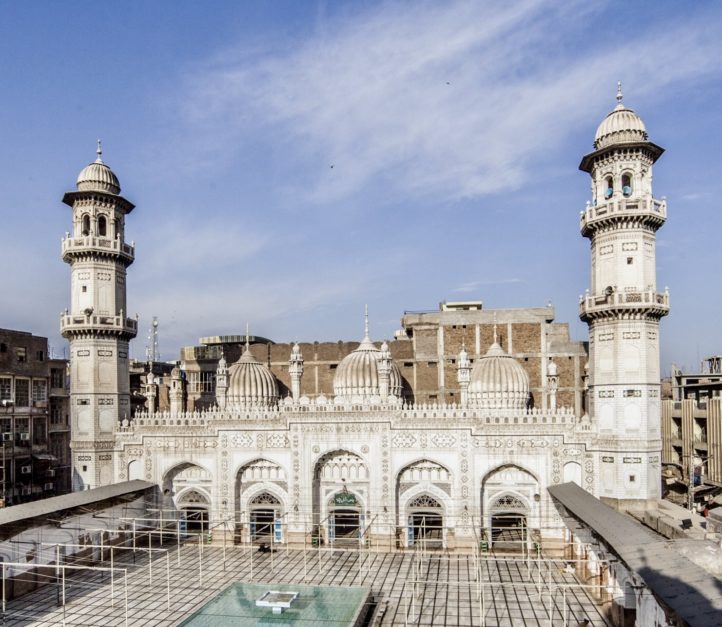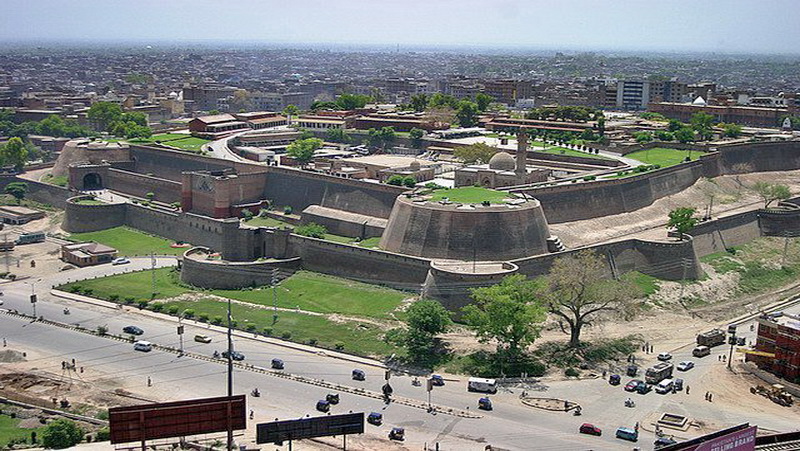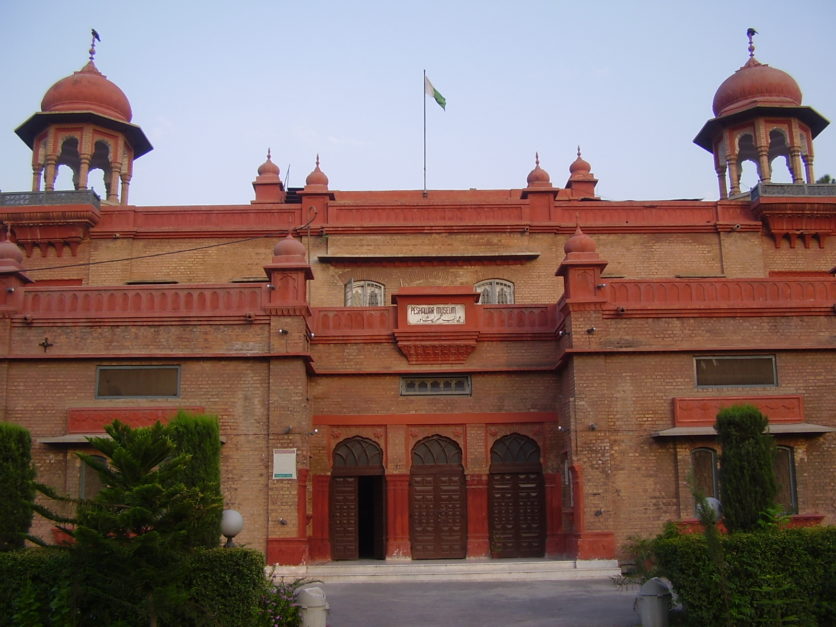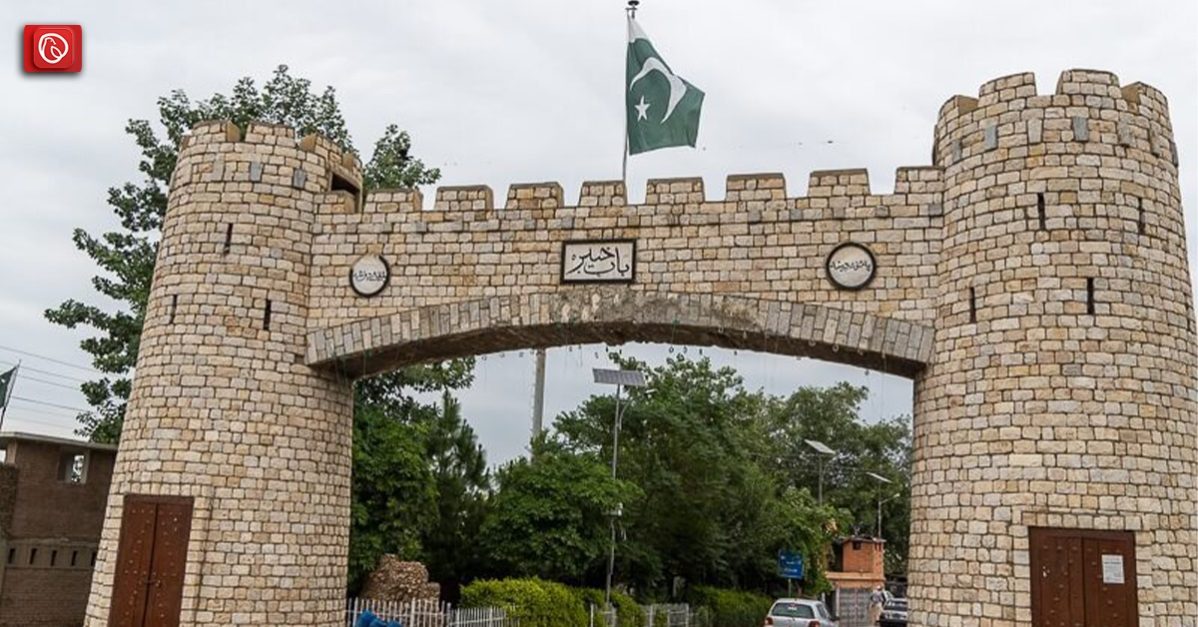Peshawar is a city with a rich history dating back centuries. The treasure trove of historical landmarks showcases its cultural heritage and architectural brilliance. Peshawar boasts a glorious past filled with dynasties, empires, and cultures that have left an indelible mark on the city’s landscape.
In this detailed blog, Graana.com will embark on a journey to explore some of the most famous places in Peshawar, each telling a captivating tale of its own.
List of Famous Places in Peshawar
Following are some of the popular places that you can visit in Peshawar.
Mahabat Khan Masjid

One of the most famous places in Peshawar is the Mahabat Khan Masjid. It stands tall as a testament to the city’s glorious Mughal past. It was constructed in 1670 AD by Mahabat Khan, the Governor of Peshawar during Emperor Shah Jahan’s reign.
This mosque exudes grandeur with its three domes and two towering 107-foot minarets. The prayer chamber is adorned with exquisite floral artwork, reflecting the artistic finesse of the Mughal era. The Mahabat Khan Masjid is a must-visit destination for history enthusiasts and architecture aficionados.
Sir Cunningham Clock Tower
Built-in 1900 to commemorate Queen Victoria’s Diamond Jubilee, Sir Cunningham Clock Tower stands as a remarkable reminder of Peshawar’s colonial past. Constructed by Sir George Cunningham, the then-governor of the North-West Frontier Province, this clock tower has become an integral part of the city’s heritage.
Locally known as “Ghanta Ghar,” it charms visitors with its timeless architecture. Situated in the bustling Chowk Yadgar area, the tower offers a glimpse into Peshawar’s colonial history and its vibrant present.
Shahi Bagh
Shahi Bagh, one of Peshawar’s oldest gardens, takes us back to the Mughal era, serving as a cultural hub for literary gatherings and social events. Spanning over 100 acres, this green oasis offers a serene escape for families and friends to indulge in various recreational activities. Shahi Bagh’s lush surroundings and historical significance make it a beloved destination for locals and visitors alike.
Qissa Khwani Bazaar
The vibrant and bustling Qissa Khwani Bazaar holds a unique place in Peshawar’s history. With a legacy dating back to the 1930s, this market was once a haven for traders and travellers from across the continent, exchanging tales and conducting commerce. Though transformed over the years, the bazaar’s narrow alleys and ancient structures evoke a nostalgic charm, making it an intriguing destination for history lovers and shopaholics alike.
Khyber Charsi Tikka
In Peshawar, there exists a famous culinary haven that all food enthusiasts must explore. Known for its unparalleled flavours, it stood out as the most incredible dining experience during the protagonist’s time in Pakistan, despite the abundance of tempting options.
Within the city, two restaurants bearing the name “Charsi Tikka,” but the one to seek out is “Khyber Charsi Tikka” This long standing eatery has carved a niche for itself, specialising in mutton dishes, with the most notable being the mouthwatering “dumba karahi.”
Dumba karahi, prepared from the delectable meat of a sheep’s large buttock and tail area, astounds with its richness, owing to the generous fat content. Each dish is meticulously cooked to order, ensuring freshness and perfection, although patrons may need to exercise a bit of patience.
The flavours of this Peshawari delicacy leave an indelible mark on the protagonist’s taste buds, prompting lingering memories long after the meal has ended.
Operating from 9:30 AM to 1 AM, “Khyber Charsi Tikka” invites all to partake in this unforgettable gastronomic journey, immersing themselves in the enchanting world of exceptional Peshawari cuisine.
Gorkhatri
Gorkhatri, far from being just another ordinary park in Peshawar, holds a wealth of remarkable historical landmarks. Among them is an ancient Buddhist archaeological site believed to be where Buddha’s giant bowl was once kept.
Situated on one of the highest points in Peshawar, this relatively small park also holds the distinction of being converted into a caravanserai by Jahanara Begum, the daughter of Shah Jahan, during the 16th century. Perhaps the most surprising feature within Gorkhatri is the Goraknath Temple, a Hindu place of worship constructed in 1851.
Despite facing numerous attacks over the years, this temple, one of the few surviving Hindu mandirs in Peshawar, remarkably remains standing. After being closed for over six decades, the temple was finally reopened in 2011. Gorkhatri is open to visitors from dawn to dusk, offering a glimpse into its rich history and diverse religious heritage.
Islamia College
Islamic College Peshawar is another historic place to visit in the city. Founded in 1913 and named in the will of Quaid-e-Azam Muhammad Ali Jinnah, it stands as one of Pakistan’s oldest institutions of higher education. The college’s impressive buildings and meticulously maintained landscape make it a popular destination for both locals and tourists.
While Pakistani visitors can explore the college grounds with ease, foreigners may encounter some difficulty gaining entry. However, given its close proximity to other attractions in Peshawar, it’s certainly worth attempting to experience this majestic piece of history. Islamia College welcomes visitors during the hours of dawn to dusk, allowing a chance to soak in the grandeur of this revered institution.
Bala Hisar Fort

Perched on a high mound in the city’s northwest corner, Bala Hisar Fort is a captivating historical destination. Originally a royal palace of the Durrani Empire, this fort was later reconstructed by the Sikh Empire in 1834.
For centuries, the historic Bala Hisar fortress has stood witness to the rise and fall of various empires, and it currently falls under the jurisdiction of Pakistan’s Frontier Corps. Its name, meaning “high fort” in the Afghan Dari language, is credited to the former Afghan emperor, Timur Shah Durrani.
Perched on an elevated mound in the northwestern corner of Peshawar, the fortress encompasses an expansive area of approximately 10 acres. Its commanding position offers visitors a breathtaking 360-degree view of the city below, a truly epic sight to behold. Within the fortress grounds, a museum awaits, showcasing a rich tapestry of military and Pashtun history, providing insight into the region’s heritage.
Bala Hisar remains open to Pakistani citizens on Saturdays and Sundays, with Saturdays being designated as family days for visitation. While any Pakistani citizen can enter the fortress with their CNIC card, it’s essential to note that being under Corps control, foreigners might encounter challenges accessing it without special permission.
If you plan to visit, be sure to take advantage of the visiting hours on Saturdays and Sundays, from 9 AM to 4 PM, to explore this historical gem and immerse yourself in its captivating past.
Bab-e-Khyber
Featured on the Pakistani 10-rupee note, this iconic structure welcomes travellers into the heart of Peshawar.
Standing proudly at the entrance to the renowned Khyber Pass, the Khyber Pass Gate is a celebrated monument steeped in history. Serving as a crucial juncture of the Old Silk Road, this passageway links Pakistan with Afghanistan, bearing witness to the exchange of cultures and goods through the ages.
Located 15 km from Peshawar, the monument’s significance and grandeur make the journey well worthwhile. While not technically within the ancient city, the Khyber Pass Gate remains a top-notch attraction. It captures the hearts of travellers like the protagonist who found it to be one of the best experiences in Peshawar.
For those seeking a glimpse into the past and the captivating allure of cross-border connections, visiting the Khyber Pass Gate is a must, offering a unique opportunity to appreciate the historical significance of this iconic gateway between nations.
Jamrud Fort
Nestled beside Bab-e-Khyber, Jamrud Fort, also known as Fatehgarh, narrates the tale of Peshawar’s strategic role during the Sikh Empire. Built by Maharaja Ranjeet Singh in a mere 45 days, this fort served as a key military stronghold. Today, it stands as a cherished heritage site, attracting history enthusiasts and architecture admirers alike.
Sethi House
The Sethi House is part of a neighbourhood of twelve famous Havelis in Peshawar’s Old City, constructed in the 19th century. This famous place in Peshawar, built in 1884, belonged to the wealthy Sethi family, prominent traders with businesses spanning South and Central Asia.
The architecture of the Sethi House is inspired by the design of Bukhara in Uzbekistan, featuring stained glass windows, intricate wooden carvings, and an elaborate underground basement.
Peshawar Museum

When you mention your visit to the capital of KPK (Khyber Pakhtunkhwa), the one place people will undoubtedly recommend is the Peshawar Museum, and for a good reason – it is truly epic!
Constructed in 1907, this museum is renowned for its remarkable collection of ancient Buddhist Gandhara artwork. Within its walls, you’ll be captivated by an impressive array of Buddhist sculptures, figurines, and other artefacts, making it one of the world’s largest repositories of Buddhist objects. The museum beautifully showcases the historical prominence of Buddhism in KPK, reflecting its rich heritage.
Beyond its exceptional Buddhist artefacts, the Peshawar Museum also houses an extensive variety of Pre-Islamic coins, captivating Mughal art, and intriguing items from the Kalash people residing in the Chitral region of the province. This diverse collection adds depth and significance to the museum’s allure.
The entrance fees are 10 rupees for Pakistani visitors and 100 rupees for foreigners. You can explore the Peshawar Museum from Monday to Saturday, between 9 AM and 4 PM.
Chowk Yadgar
Chowk Yadgar, an iconic monument in Peshawar’s Old City, was originally built in 1892 in memory of General Hastings. However, over time, it became a memorial for the victims of the 1930 Qissa Khwani Bazaar Massacre. Over the years, Chowk Yadgar has evolved into a multifaceted gathering point. Moreover, it has become a favoured location for religious and political events.
But on ordinary days, it serves as a relaxed hangout spot. Surrounded by charming alleyways, it seamlessly fits into the exploration of Peshawar’s Old City. The vicinity is also adorned with several vintage Havelis, some just a stone’s throw away from Chowk Yadgar. Chowk Yadgar remains accessible at all times. Visiting during daylight hours is recommended to fully appreciate its historical significance.
Conclusion
Peshawar, with its rich history and cultural heritage, offers an unforgettable experience for travellers seeking a glimpse into Pakistan’s past. Exploring the famous places of Peshawar will take you on a journey through time, immersing you in the vibrant tapestry of this oldest living city in South Asia. Whether it’s ancient Havelis, majestic forts in Pakistan, or culinary delights, Peshawar has something to captivate every traveller.
FAQs
Is Peshawar safe for travel?
Yes, Peshawar is safe for travel, and this city has an incredible amount of history to see. However, travellers should exercise usual caution and stay updated on travel advisories before planning their trip.
What are the visiting hours for the famous places in Peshawar?
The visiting hours for various attractions in Peshawar may vary. Most places are open during the daytime, while some have specific hours of operation. However, it’s best to check with each site individually for accurate visiting hours.
What is the speciality of Khyber Charsi Tikka?
Khyber Charsi Tikka specialises in mutton dishes, with their most notable offering being “dumba karahi,” made from the large buttock and tail area of a sheep. The dish is known for its juicy and flavorful taste.
Can foreigners visit Bala Hisar Fort?
Due to the fort being under the control of security forces, foreigners may have difficulty entering without special permission. However, Pakistani citizens can visit Bala Hisar Fort on Saturdays and Sundays.
What is the significance of Gorkhatri?
Gorkhatri is home to an ancient Buddhist archaeology site believed to have held Buddha’s giant bowl. The park also houses the Goraknath Temple, a Hindu place of worship that has survived challenges over the years.
This is all about the famous places in Peshawar. If you want to read about the famous Tatara Park, visit Graana blog.




